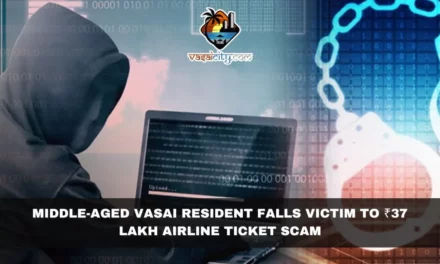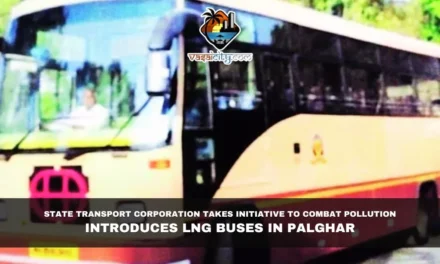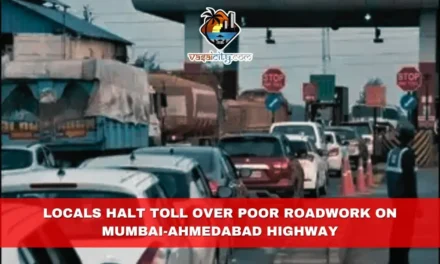Vasai Virar illegal constructions have become one of the most disturbing and long-standing urban challenges in the region, with several building collapses reported over the past year. This issue reflects not only safety concerns but also highlights deep-rooted failures in planning, governance, land management, and public awareness.
Table of Contents
Vasai Virar Illegal Constructions Linked to Multiple Collapses
In the last 12 months alone, at least six building collapse incidents have been reported in the Vasai–Virar area. Shockingly, every single one of these structures was classified as an illegal or unauthorized construction, raising serious questions on how such buildings were allowed to exist and operate for years.
Arrests and Major Scam Exposed in Nallasopara
In a major enforcement action on August 13, the Enforcement Directorate arrested IAS officer and former VVCMC commissioner Anil Kumar Khanderao Pawar, along with Deputy Director of Town Planning YS Reddy and Bahujan Vikas Aghadi leader Sitaram Gupta.
The arrests were linked to a massive money laundering case involving 41 illegal buildings constructed in Nallasopara on land officially reserved for public amenities. These buildings were demolished in March this year following strict intervention by authorities.
Land Grab and Environmental Damage
These buildings occupied nearly 60 acres of land, out of which 30 acres were originally allocated for a sewage treatment plant and dumping ground—critical infrastructure for a growing city.
The remaining land was private property allegedly grabbed by political and private players, according to multiple investigations.
The consequences of such land misuse are alarming. With floodplains, mangrove zones, and wetlands being reclaimed illegally, natural drainage cycles have been severely damaged—leading to increased flooding risk, waterlogging, and future public health hazards.
How Vasai Virar Transformed Without Planning
Historically, as of May 1, 1960, the Vasai–Virar region was a peaceful agrarian zone, enriched with mangroves, salt pans, farms, and forests. Agriculture was the primary livelihood, with staple local produce including rice, vegetables, flowers, and betel leaves.
However, the rapid rise in Mumbai’s real-estate prices forced thousands of families to migrate towards Vasai–Virar due to more affordable housing options. Between 1960 and 1980, construction was limited to small bungalows and chawls for locals and new settlers.
The next phase, 1980 to 2010, saw the emergence of mid-rise cooperative housing society buildings, followed by tall towers after 2010.
Unfortunately, while urbanization grew, town planning did not. Many structures did not obtain commencement or completion certificates, while others were built using outdated construction methods, weak materials, and unsafe land patches—especially reclaimed low-lying wetland areas.
Why Illegal Buildings Pose Extreme Danger
Experts state that the primary cause of collapses in Vasai Virar illegal constructions is poor land suitability and weak foundation work. Many structures were built on unstable reclaimed soil, previously functioning as natural floodplains.
During heavy rains, these foundations weaken drastically, eventually leading to cracks, structural instability, and collapse. Residents living in such buildings are at constant risk without even realizing it.
Additionally, natural tidal zones have been lost due to unplanned reclamation, creating long-term drainage and flooding challenges for at least the next 50 years.
How Loopholes Allowed Illegal Constructions to Thrive
Before Vasai Virar City Municipal Corporation (VVCMC) was formed in 2010, the region was governed by smaller civic bodies like nagar parishads and gram panchayats, which lacked manpower, technology, and monitoring systems.
Documents show that many illegal settlers occupied land long before VVCMC existed, and several buildings were later “legalized” using indirect proofs like water bills or sewage bills rather than verified official documents.
This loophole-based regularization process created multiple unlisted and untracked properties that still exist today, with thousands of unaware families residing inside buildings that could be declared unsafe at any time.
Conclusion
The issue of Vasai Virar illegal constructions is not just a law-and-order problem but a multi-layered crisis involving environmental destruction, administrative loopholes, public risk, and unregulated development.
Effective urban planning, awareness campaigns, strict enforcement, and transparent real-estate policies are crucial for the region’s safe future.
Inputs by Biju Cherian
This article is based on the author’s research and perspectives. The publisher claims no responsibility for inaccuracies. Views expressed are the contributor’s alone. Institutions mentioned are not endorsed unless specified.








